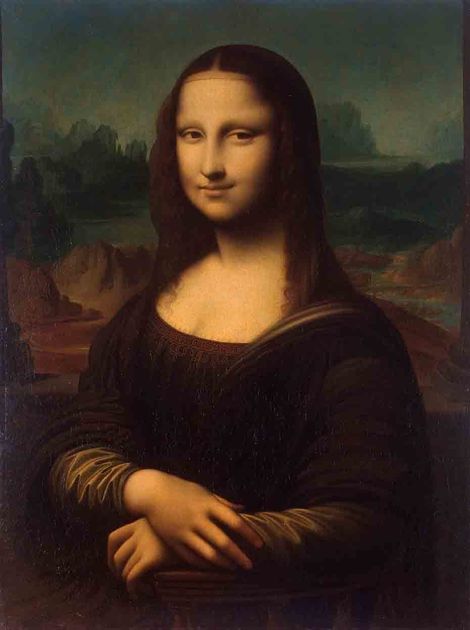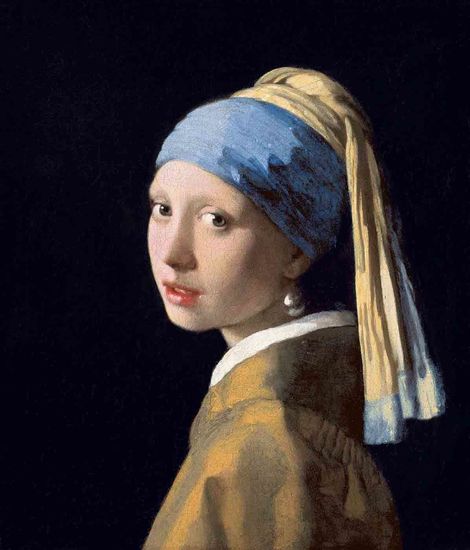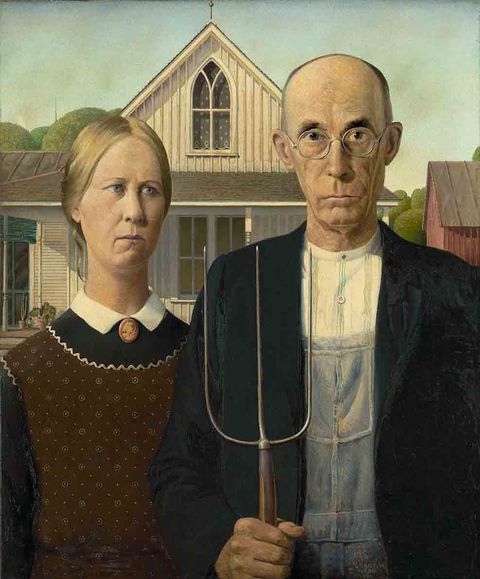Thinking inside the lines: creating a simple masterpiece
Website Editor • November 17, 2019
It’s a myth that beautiful art has to be complicated or complex. You don’t need to spend weeks or months on a piece for it to be a masterpiece. In fact, some of the most creative and amazing pieces of art ever created were simple. They did not use innovative or out-of-the-ordinary techniques, but followed the rules of art and were simply beautiful. They evoke thoughts and feelings that go beyond the canvas and draw the attention and eyes of the viewer. All the following paintings are more than the sum of their parts and do not rely on complexity or innovation to make them unique and beloved.
The Mona Lisa
Widely considered the most famous and beloved painting of all time, this painting is incredibly simple, yet a complete masterpiece. It depicts a woman sitting and smiling softly. It was painted by Leonardo Da Vinci in the early 1500s. It is not done in a wildly experimental style and doesn’t tell a complex story.

Girl With a Pearl Earring
This painting by Johannes Vermeer is similar to the Mona Lisa in that it is a simply painted portrait of a young woman. At first glance there is little extraordinary about it. But it is hard to deny it’s a masterpiece. The colours and command of shadow and texture are masterful and only enhance the beauty of the subject.
American Gothic
This iconic piece of American art shows a farmer and his daughter standing in front of their home. It is a simple painting, many people even think it’s dull. However, it is a masterpiece as it plainly and calmly symbolizes The Great Depression in America in the early 1900s.
Royal Red and Blue
This painting by Mark Rothko is simply made up of red and blue squares painted on a canvas. It is abstract art that seems painfully simple at first, with no apparent subject or meaning but this abstract expressionist painting sold for over $75 million in 2012. It is absolute proof that a masterpiece can be simple.
Composition With Grid 8
This painting by Piet Mondrian follows in line with most of his work. He often paints with geometric shapes, neatly tessellated or aligned, and bright blocks of solid colour. His paintings are definition of “painting inside the lines” as they maintain rigid order throughout. Despite, or maybe because of this rigidity, his paintings are some of the most loved contemporary abstract art in the world.
Articles

The United Nations has described the disruption to education caused by the pandemic as ‘unparalleled’. At the virus’ worldwide peak in April, it is estimated that over 90% of all enrolled learners, from kindergarten to bachelors and beyond, had their education affected by school closures and the pandemic (UNESCO). For many university students and older children, they have had to adapt quickly to online learning. They can keep in touch with their peers and teachers online and continue their studies, albeit in a highly modified way. As challenging as this may be, this experience will help equip them for a future that is increasingly online. For parents of younger children, they are assuming a new role: their child’s home school teacher. This is in addition to their usual childcare and household duties, their work responsibilities and often emotional and financial worries caused by the pandemic. Stressful? Yes. The good, and somewhat surprising, news? The experts advise that you don’t teach your children - at least not in the way you might expect.

If the recent outbreak of Covid-19 has taught us anything, it's that many adults do not wash their hands effectively. It has never been more important that we support our children to develop good personal hygiene to keep themselves and our families safe. This seemingly easy task can be very difficult for children with fine motor skill difficulties. In this article, we explore some ideas to support your child with hand washing.

Lockdown has brought the digital future into the now. Online shopping, entertainment, education and more have moved from the periphery to the mainstream to, in many cases, the only option. With the necessity of social distancing looking to continue for many months, it appears that this rapid digital revolution is here to stay. This means that life as we know it, in most of its sectors, has changed forever. In order to survive, businesses are having to adapt rapidly, embrace technology and look to the future. Architecture is no exception. There has been a widespread adoption of technology and VR over the past few months in response to the lockdown across all of society. Elderly grandparents who were once resistant to adopt new technologies talk of “Zooming” and have started video chatting with their family members to combat loneliness. Art galleries that were once considered stuffy or pretentious are now pioneers in VR technology, with Google Art & Culture offering tours of London’s National Gallery or the Musee D’Orsay in Paris. These virtual tours deliver art in a dynamic new way that can be far more engaging than regular photos. Critics have applauded the panoramic and immersive views of gallery building and exhibitions which work well for rendering of 2 dimensional art, however impressions of sculpture is somewhat lacklustre. With VR technology, users can enjoy a truly immersive experience in the comforts, and safety, of their own home. The COVID-19 pandemic has served as an accelerant for the arts and entertainment industries to embrace VR.







